Perhaps you’ve already asked yourself the following question: Why do I constantly lose sight of the bigger picture of what I’m learning with Anki flashcards?
Logically organizing your decks with sub-decks and tags make it easier to form a clear picture of whatever complex topic you’re learning, be it anatomy, pharmacology or even machine learning. (What could also help is the Image Occlusion add-on I talk about in this article)
In this article, I’ll show you how to organize your Anki decks. Also, you’ll learn how to visualize your study by organizing your flashcards.
The significance of organized decks for efficient learning
As a student, you're no stranger to the massive amount of information you need to learn and retain. Anki comes in handy here– but only if you have an organized system in place. You see, having well-structured decks is crucial for efficient learning. It allows you to easily find and review specific topics, making your study sessions more focused and productive.
Imagine trying to find a specific card in a messy room – it's frustrating and time-consuming, right? The same goes for your Anki decks. When you organize them neatly into categories, sub-decks, and tags, you'll be able to locate the cards you need quickly and effortlessly. This not only saves you valuable time but also helps you stay motivated and maintain a consistent study routine.
An organized Anki system is like a well-oiled machine, primed to help you conquer your study goals and ace those exams. Let's dive into some tips and tricks to get your decks in tip-top shape!
Organizing Decks by Subject or Course
You're juggling a ton of information, and that's why you've turned to Anki to help you keep track of it all. But how you organize your decks can make a huge difference in your learning efficiency. In this following section, we'll explore the significance of organized decks and how they can help you learn faster and smarter.
Tips for creating separate decks for different subjects or courses
If you're looking to level up your Anki game, one simple but effective tip is to create separate decks for each subject or course you're taking. There are a bunch of benefits to this:
- Easier navigation: By having separate decks for each subject or course, you'll be able to quickly locate the specific cards you need to study. No more wasting time searching through a massive pile of mixed cards!
- Better focus: Studying one subject at a time helps you stay focused and engaged. By working through a single deck, you'll be able to immerse yourself in the material and better retain the information.
- Custom settings: Each subject or course might require different study settings or strategies. By separating your decks, you can easily adjust settings like review intervals, new card limits, or learning steps to fit the unique demands of each subject.
So, how can you create separate decks for different subjects or courses? It's easy! Just follow these simple steps:
- Open Anki and click on "Create Deck" at the bottom of the screen.
- Give your new deck a descriptive name related to the subject or course (e.g., "Biology 101" or "Organic Chemistry").
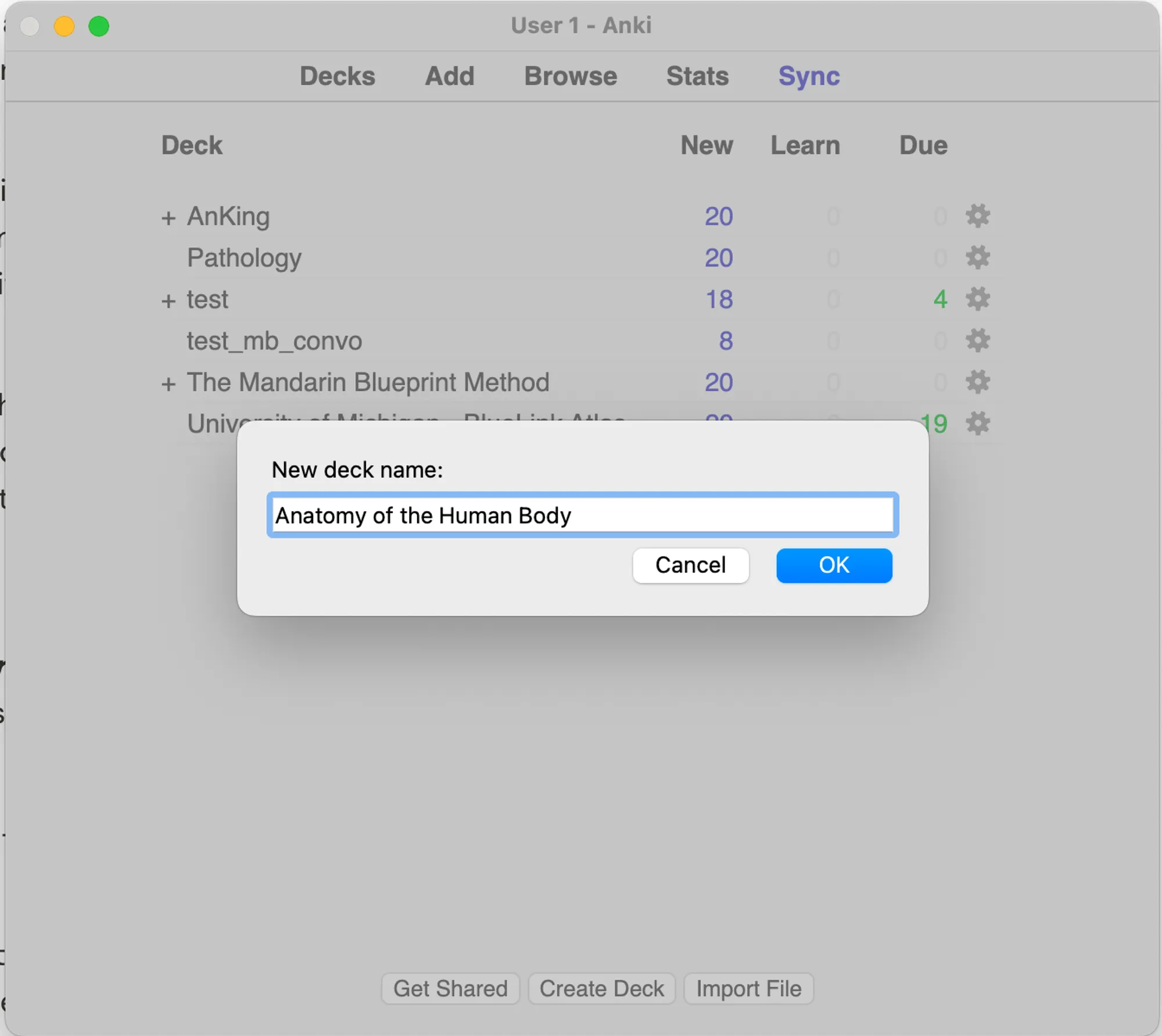
- Start adding cards to the new deck or move existing cards from other decks by selecting the cards, right-clicking, and choosing "Change Deck."
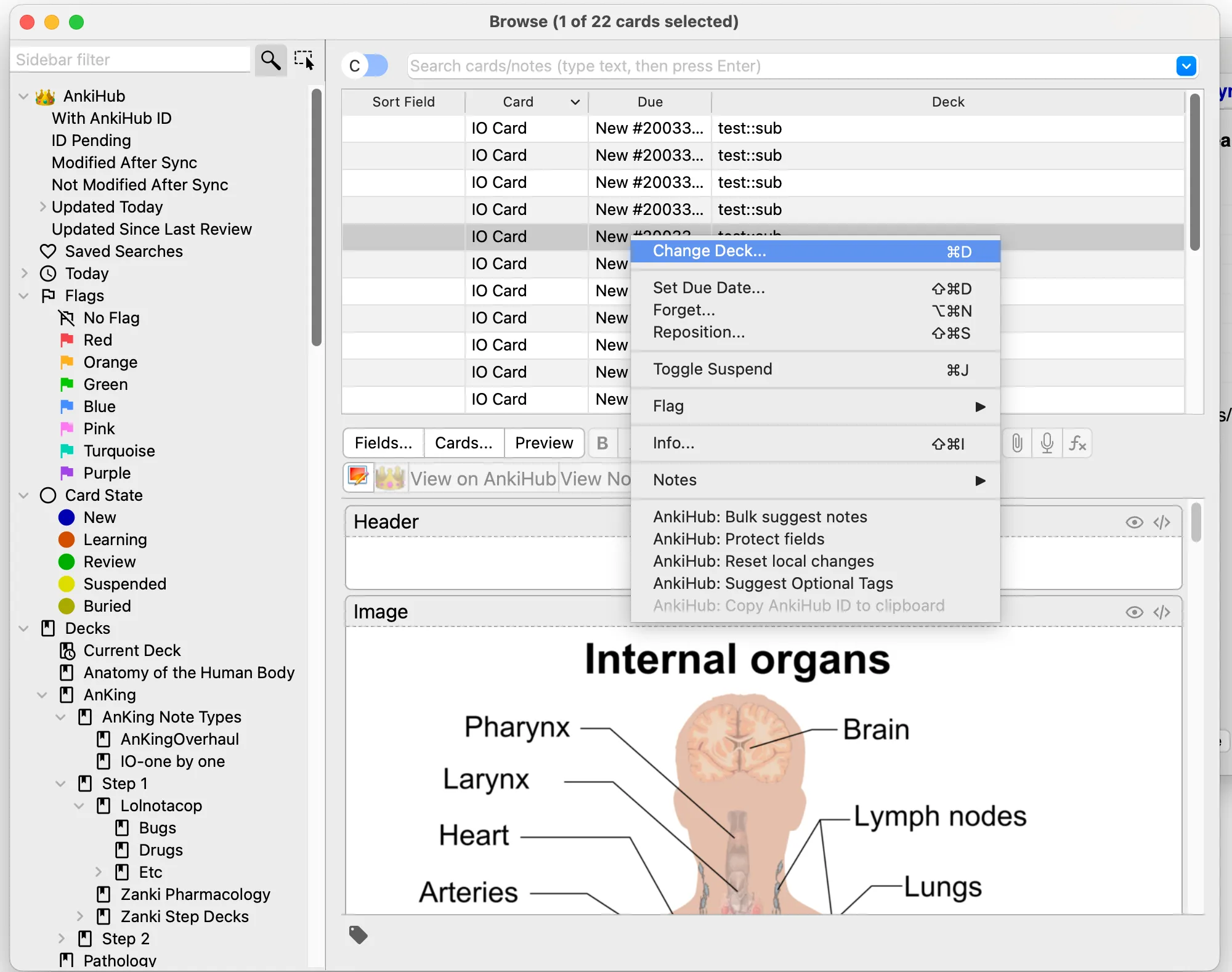
Repeat these steps for each subject or course, and you'll finally have a neatly organized Anki library.
Utilizing Sub-decks for Hierarchical Organization
In this section, we're going to introduce you to sub-decks – a fantastic way to create a hierarchical structure within your Anki decks. By mastering the art of sub-decks, you'll be able to break down complex subjects into manageable chunks, making your study sessions more targeted and efficient. Let's learn how to make the most of this powerful organizational tool:
Strategies for using sub-decks to create a hierarchy of decks
Sub-decks help you create a hierarchy of decks, and break down complex subjects into smaller, more manageable pieces. Here are some strategies to get you started:
- Break down subjects by topic or module: Within a subject deck, create sub-decks for specific topics or modules. For example, if you have a "Biology" deck, you could create sub-decks for "Cell Biology," "Genetics," and "Ecology." This helps you focus on one topic at a time and makes it easier to review specific areas.
- Organize by difficulty or priority: Another way to use sub-decks is by organizing cards based on their difficulty or importance. You could have sub-decks like "High Priority," "Medium Priority," and "Low Priority," or "Easy," "Medium," and "Hard." This way, you can use your study time more effectively.
- Separate lecture and textbook material: If you have both lecture notes and textbook material to study, consider creating sub-decks for each source. This allows you to review them separately and ensures you're not overlooking any information.
Here's how to create a sub-deck in Anki:
- Click on "Create Deck" at the bottom of the screen.
- Create a sub-deck: To create a sub-deck, simply use double colons (::) to separate the different levels. For example, "biology::cell_biology::mitochondria" would create a hierarchy with "biology" as the top-level tag, "cell_biology" as a sub-tag, and "mitochondria" as a sub-sub-tag.
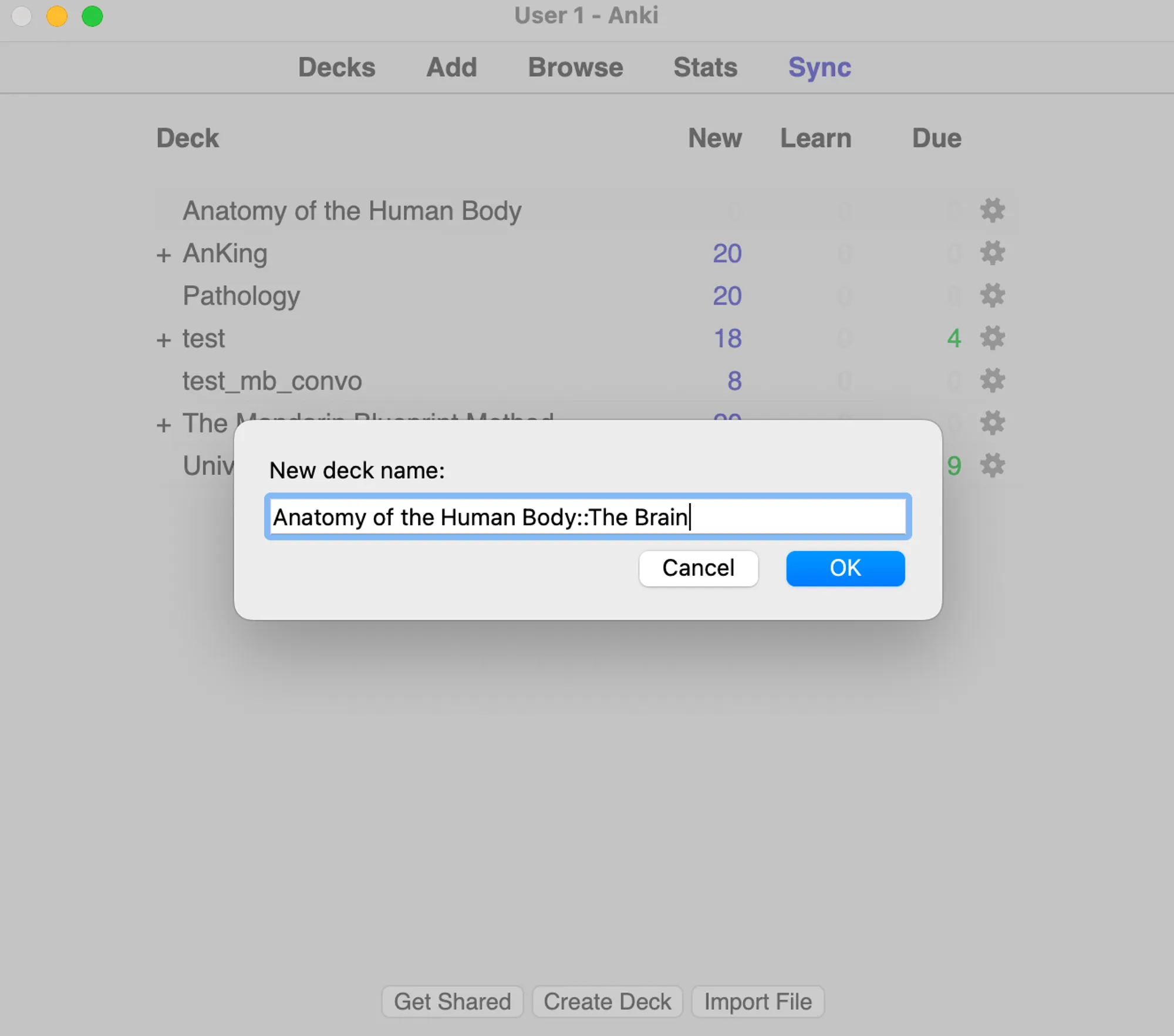
- Similar to before, you can now add cards to the new deck or move existing cards from other decks by selecting the cards, right-clicking, and choosing "Change Deck."
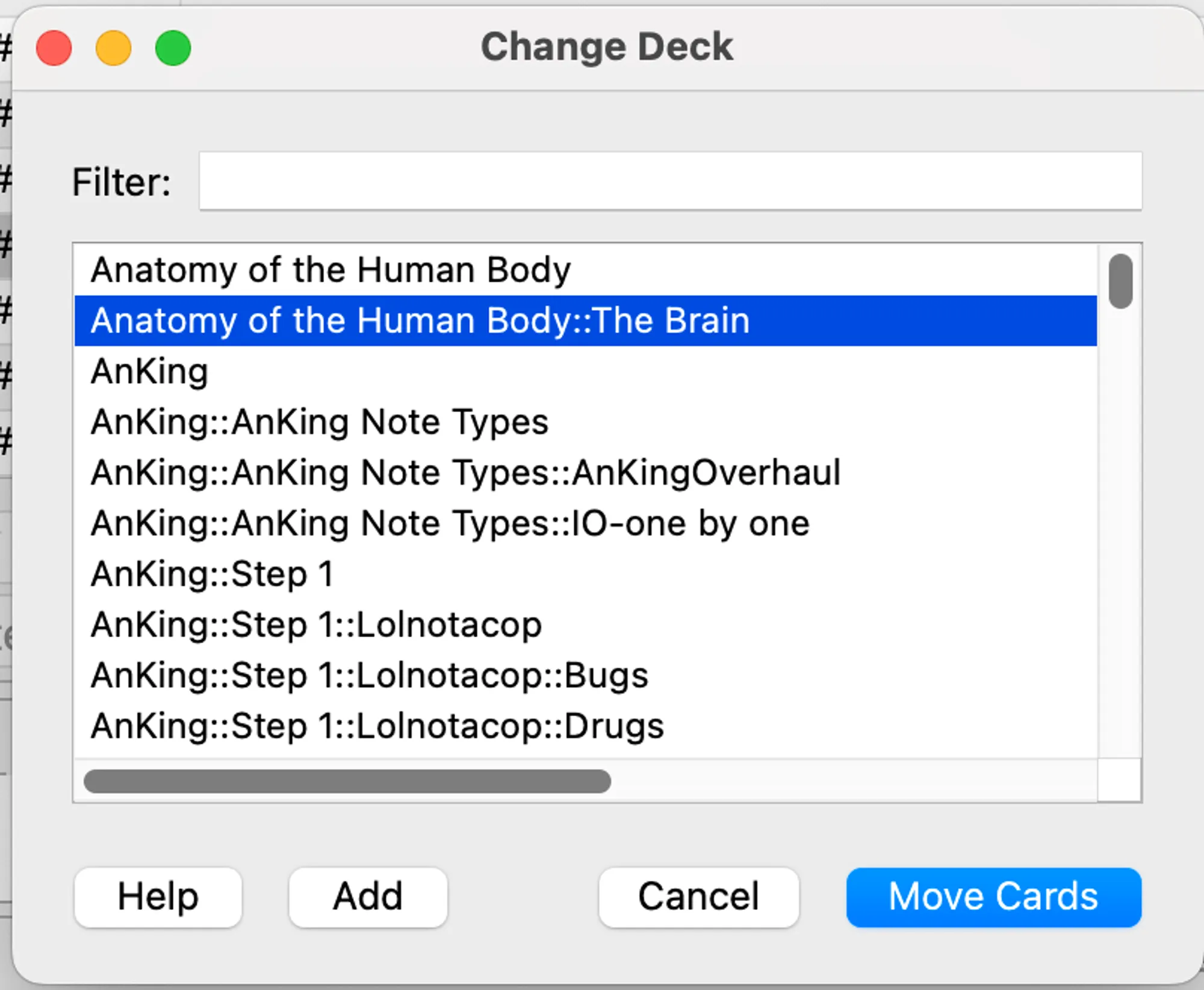
Keep experimenting with sub-decks until you find a hierarchy that works best for you. With a well-organized deck structure, you'll be able to navigate your study materials with ease and boost your learning efficiency.
Implementing Tags for Card Categorization
In this section, we'll explore the magic of tags and how they can help you categorize your cards. With tags, you'll be able to filter them, create custom study sessions, and breeze through your study materials.
How to use tags effectively to categorize and filter cards
Ready to make the most of tags in Anki? With tags, you can categorize and filter your cards, making your study sessions more focused and efficient. Let's dive into how to use tags effectively:
- Be descriptive: When creating tags, use descriptive words that accurately represent the card's content. For example, if you have a card about cellular respiration, you could tag it with "cell_biology," "energy_production," and "mitochondria."
- Keep it consistent: To make your tags more effective, maintain a consistent naming convention. For example, use underscores instead of spaces or hyphens, and stick to lowercase letters.
- Group related cards: Use tags to group cards that share a common theme or concept, even if they're in different decks. This way, you can study related material from multiple sources simultaneously.
- Don't overdo it: While tags can be powerful, try not to assign too many tags to a single card. Stick to a few relevant tags that best represent the card's content.
So how do we create tags? It just takes a few steps:
- Open Anki and click on "Browse" at the bottom of the screen.
- Navigate to the card you want to tag
- Click the Tag icon at the bottom
- Type the name of your tag, and click Enter to confirm. Repeat to add multiple tags
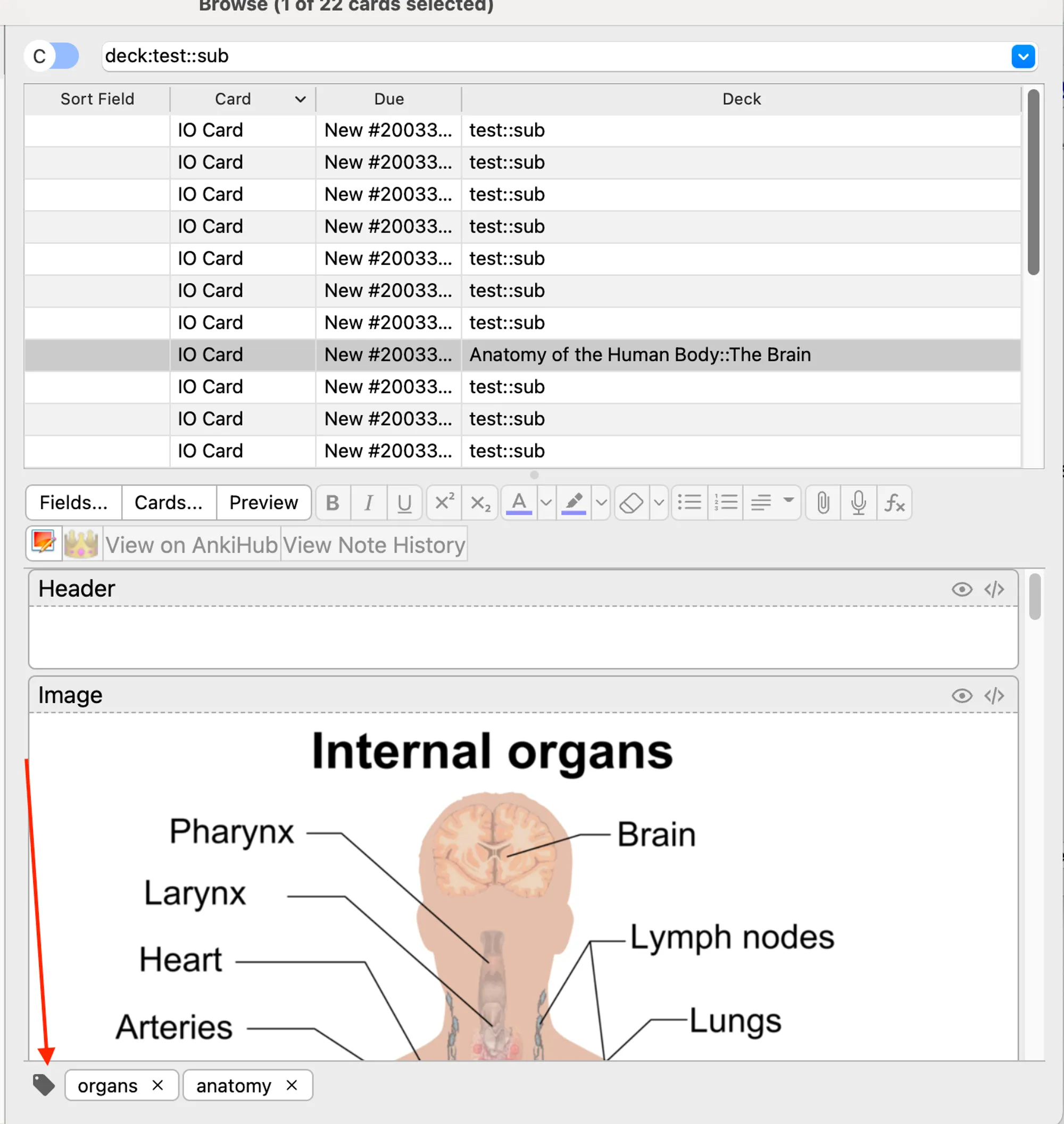
Advanced Organization with Hierarchical Tags
In this section, we'll introduce you to hierarchical tags – an advanced method for precisely organizing your cards. By mastering hierarchical tags, you'll be able to create multi-level categories, making it easier to navigate and study complex subjects. Let’s unlock the full potential of Anki's tagging system…
Utilizing hierarchical tags for multi-level card organization
Hierarchical tags are here to help you create a multi-level card organization system. With this advanced technique, you can break down your tags into subcategories for even more precise filtering. Here's how to do it:
- Create hierarchical tags: To create a hierarchical tag, simply use double colons (::) to separate the different levels (just like with the hierarchical decks ;) ). For example, "biology::cell_biology::mitochondria" would create a hierarchy with "biology" as the top-level tag, "cell_biology" as a sub-tag, and "mitochondria" as a sub-sub-tag.
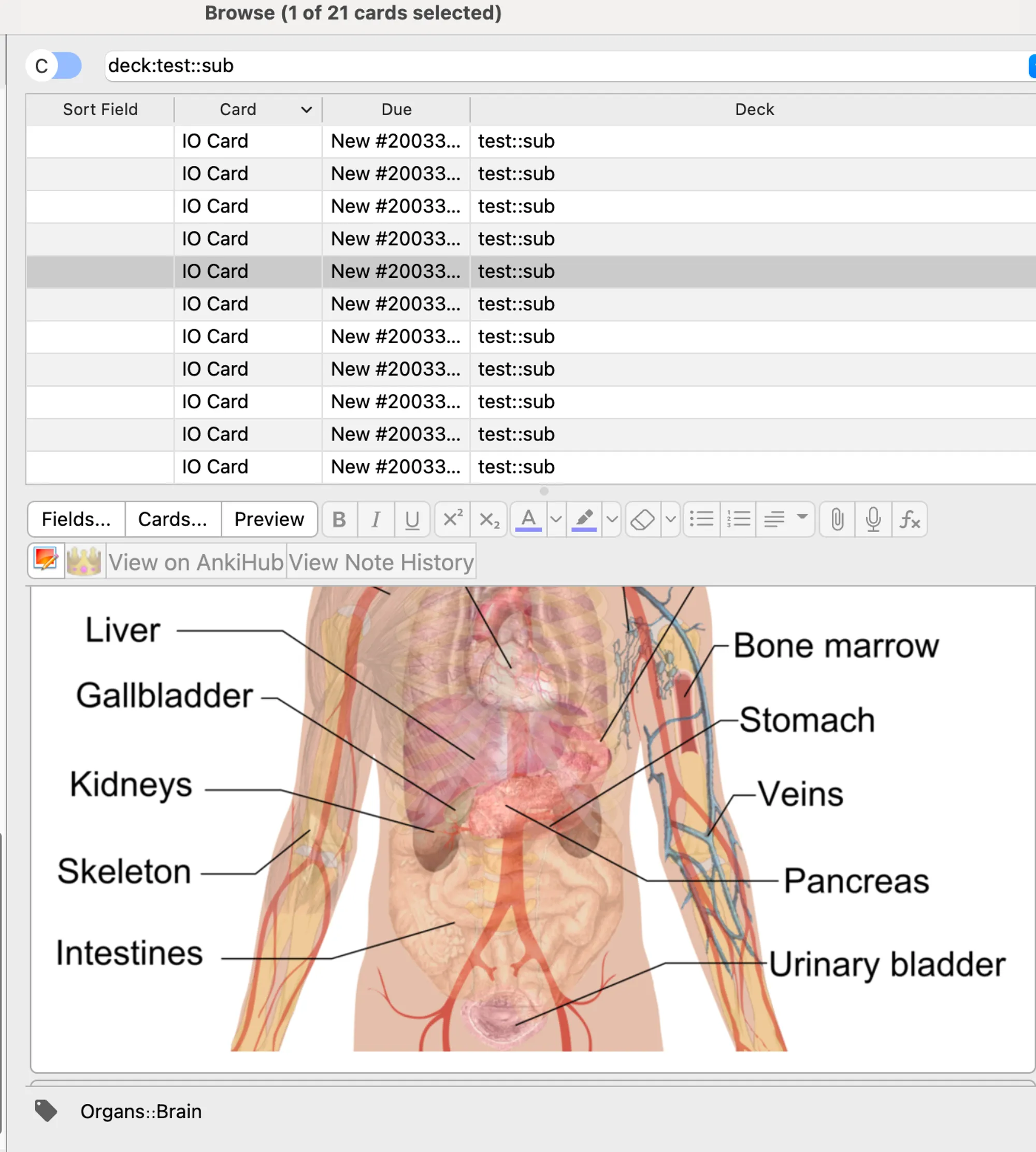
- Stay consistent: Just like with regular tags, it's crucial to maintain a consistent naming convention for your hierarchical tags. This will make it easier to filter and search for cards later on.
- Keep it simple: While hierarchical tags can be powerful, try not to overcomplicate your tag structure. Stick to a few levels of hierarchy that best represent the card's content and make it easy to navigate.
- Use add-ons: To make managing hierarchical tags even easier, consider using Anki add-ons like "Colorful Tags (+ Hierarchical Tags)". These add-ons provide a more visual and user-friendly way to organize and manage your tags.
Hierarchical tags will enable you to navigate complex subjects with ease and create highly targeted study sessions.
So, should I use sub-decks or tags?
Both sub-decks and tags have their benefits, and understanding their differences can help you decide which approach works best for you. Let's break it down:
Sub-decks:
- Hierarchical organization: Sub-decks allow you to create a visual hierarchy of decks, making it easy to break down subjects into smaller topics or modules.
- Custom settings: With sub-decks, you can apply different settings (like review intervals, new card limits, or learning steps) to each deck, tailoring your study strategy for each subject or topic.
- Review order: When studying, Anki reviews cards from sub-decks in the order they appear in the deck list. This can be helpful if you prefer to study specific topics in a particular order.
Tags:
- Flexibility: Tags offer a more flexible way to categorize cards, as you can assign multiple tags to a single card, allowing it to appear in various custom study sessions.
- Cross-deck organization: With tags, you can group related cards from different decks, making it easy to review cards that share a common theme or concept.
- Custom study sessions: Tags enable you to create custom study sessions based on specific criteria, helping you focus on particular topics, difficulties, or priorities.
In a nutshell, if you prefer a more structured, hierarchical organization with different settings for each topic or module, sub-decks might be the way to go. On the other hand, if you're looking for a more flexible and versatile approach to categorizing and filtering cards, tags could be your best bet.
Ultimately, the choice between sub-decks and tags depends on your personal study preferences and organizational style. You might even find that a combination of both methods works best for you.
How to combine Decks, Sub-decks, Tags, and Hierarchical Tags for Optimal Organization
By combining all of the above, you create a powerful and efficient study system tailored to your needs:
- Start with decks: Create separate decks for each subject or course to keep your study materials organized at a high level. This will make it easier to navigate and focus on specific areas of study.
- Utilize sub-decks: Within each subject deck, create sub-decks for smaller topics or modules. This will help you break down complex subjects into manageable chunks, allowing you to study one topic at a time.
- Tag your cards: Assign descriptive tags to each card, making it easy to group related cards and create custom study sessions. Remember to keep your tags consistent and concise for maximum effectiveness.
- Go deeper with hierarchical tags: For even more precise organization, create multi-level tags using double colons (::). This will allow you to categorize cards into subcategories, making it easier to navigate and study complex subjects.
- Combine strategies: Use a mix of sub-decks and tags to organize your cards based on different criteria. For example, you might use sub-decks to separate topics within a subject, while using tags to denote difficulty levels or lecture vs. textbook material.
- Experiment and adjust: Feel free to tweak your organization systems as needed. Your study preferences and needs will probably evolve over time, and it's important to support your learning journey in this regard.
By combining decks, sub-decks, tags, and hierarchical tags, you'll create a highly organized Anki system that streamlines your study process and helps you tackle the most complex subjects.
A different way: Organize your Decks Visually
There actually is another way to organize your flashcard decks… One that offers the speed and intuitiveness of tags, with organizational benefits of subdecks.
Enter visually organized flashcard decks: Traverse, a study app we built to address the shortcomings of Anki, offers you an infinite “drawing canvas,” in which you can create mind maps. You can then attach your flashcard directly to a note in your map. This resembles most closely the way your brain works, ensuring that you always see the bigger picture when reviewing your flashcards. This guarantees that you truly use spaced repetition to master not memorize.

Plus, Traverse is 100% compatible with Anki’s flashcard deck format.
This means, that your scheduling information is preserved so you can pick up exactly where you left off. Images, audio and other media are also included, as are image occlusions. All your tags and sub-decks are saved, too.
By importing your Anki decks into Traverse, you can organize all of your decks and cards in visual mind maps, so you can see how things connect. On top of that, you can add notes and upload all your study materials!
How Medical Student Raleigh used visually organized flashcard decks ace the MCAT
While prepping for the MCAT, Raleigh initially came across Anki. While it was very beneficial for retaining information, he felt that he had trouble seeing how things connected to the bigger picture.
Once Raleigh came across Traverse, it felt like a missing puzzle piece. He imported his Anki decks, and then mapped out complex processes like the Krebs Cycle. Flashcards could now naturally be added to the place they belonged, and he even used “mind map occlusion flashcards” to visually review his mind map with spaced repetition.
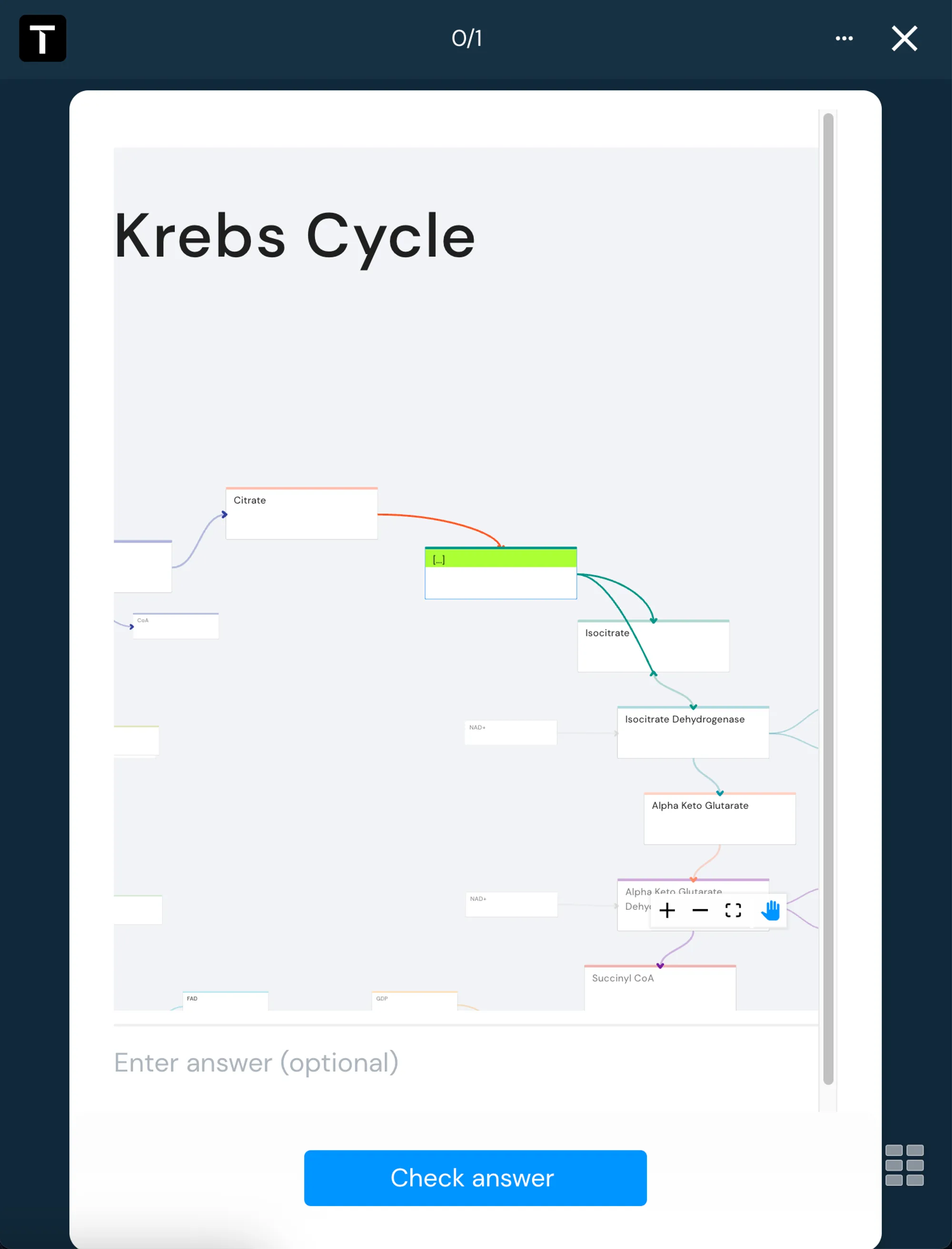
The result: a 99th-percentile MCAT score, and a deep understanding which still benefited him in medical school.
Conclusion
The right organization brings structure to your study, and helps you see the big picture. Without a clean study approach, it’s easy to get lost in a sea of isolated facts. Subdecks and tags help you organize your Anki decks in a way that makes logical sense.
You can take this structured approach further by visually organizing your decks into a mind map. If you want to give that a try, sign up for Traverse.
